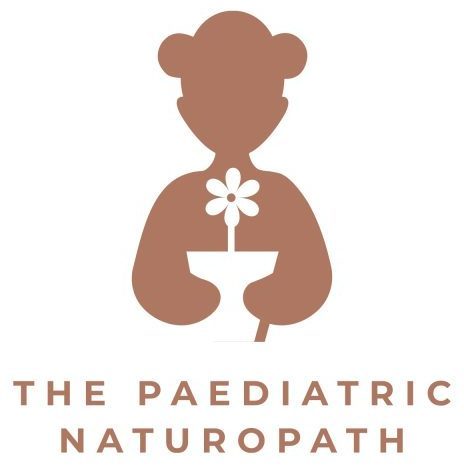Fever.
A sign that your child is fighting an infection.
They may be unusually quiet and flopped on the couch, they may be complaining of aches and pains.
They may have already showed other signs they have caught a bug- runny nose or a cough.
They might wake up in the middle of the night upset and uncomfortable.
Do you fear the fever?
No parent enjoys seeing their child unwell. Some may fear the fever and become anxious about how to control it.
I am going to give you a few tips on how to manage fevers and when, if need be, to reach for the paracetamol.
But first, let’s understand why there is a fever in the first place.
The purpose of a fever
A fever is a natural response initiated by your immune system to deal with an infection such as a virus or bacteria.
There are a number of ways in which a fever helps us fight an infection.
- A fever helps recruit and mobilise the troops to the site of infection.
- A fever helps arm these troops with the ammunition they need to fight and destroy the infection.
- A fever stops bacteria and viruses growing in number.
Allowing the fever to do its job properly gives your child a better chance of resolving the infection well and in good time.
Using something like paracetamol to reduce the fever can actually delay recovery and even complicate the infection.
But what about febrile seizures?
Research actually states that trying to reduce the fever with paracetamol does not prevent febrile seizures.
Febrile seizures can be frightening but be rest assured that they do not pose any negative health effects for your child.
They affect 2-5% of kids between the ages of 6 and 60 months and for those who have repeated bouts it may be worth looking deeper. There is some evidence to suggest these kids are deficient in a number of important nutrients.
Should I worry about a fever?
We are very accustomed to automatically taking temperatures to figure out if we should be worried about a high temperature in a sick child. Then, if it is over a certain temperature, we jump straight for the Panadol or Nurofen to bring it down.
The fever itself and how high the temperature is does not reflect how serious the infection or illness is. It is the other signs and symptoms – how your child is behaving and what they look like that are more important. You need to watch them and understand these factors to make a decision.
One exception to this, however, is for babies 3 months of age or younger.
For these young ones, it is recommended to monitor their fever and to seek immediate medical attention if reaches over 38°C; even if there are no other signs of an illness.
For children between 3 and 12 months of age, a fever over 39°C would prompt immediate medical attention.
Other reasons that flag prompt medical attention include a temperature over 38°C plus
- Looking very sick and dazed
- Being difficult to wake or kept awake
- Crying a lot and being inconsolable
- Not wanting to breast or bottle feed
- Drinking or weeing less than normal
- Complaining that weeing hurts
- Having severe tummy pain
- Vomiting or having diarrhoea repeatedly
- Being limp/ unable to use their arms and legs
- Having a rash, redness or swelling on their body
- Having blue, pale, grey or blotchy spots, or purple spots
- Non-blanching rash
- Having a lot of trouble breathing
- Having a stiff neck and sensitivity to light
How to manage a fever at home
If there are no concerning signs and symptoms, you can manage a fever at home by doing the following:
- Make your child feel as comfortable as possible
- Keep your child well hydrated
- For babies under 6 months of age who are breastfed, provide extra feeds
- For babies under 6 months of age who are bottle-fed, stick to the recommended number of feeds
- For children over 6 months of age, you can provide small amounts of room temperature or warm water as needed
- For children over 6 months of age, a warm herbal tea made from yarrow, elderflower and peppermint can be used
How to make the herbal tea
Blend together 10g each of yarrow, elderflower and peppermint in a jar and use 1 teaspoon infused in boiling water for 10 minutes. Cool the tea down enough before giving your child to sip on. You can give them about 30ml three times a day. They are fine to have more than 30ml if they are enjoying it.
It is not recommended to put your child in a cool bath, expose them to cold air or use ice to cool them down as this will only complicate the fever process. It encourages the periphery to cool down and the core body temperature to rise placing our vital organs in danger.
And what about paracetamol?
Reaching for the paracetamol or ibuprofen should be more about reducing your child’s pain and discomfort as opposed to reducing their temperature.
Paracetamol and ibuprofen do not come without unwanted adverse effects. As we mentioned earlier, it can delay recovery or complicate the infection. Additionally, for those who have an atopic condition or a family history of one (eczema, allergies, asthma), there is evidence that these pharmaceuticals can increase a child’s risk of developing atopic conditions such as eczema and asthma and increase asthma symptoms in asthmatics.
If your child is distressed and is in much need of some rest, follow the doses according to your child’s weight on the back of the pack.
- Paracetamol is to be used for babies under 6 months of age
- Paracetamol or Ibuprofen can be used for babies over 6 months of age. Both reduce fever and pain. Ibuprofen has additional anti-inflammatory effects.
In summary
A fever is a very important tool the immune system has.
Now that we understand some of the benefits of a fever, we can feel a bit more at ease with letting it run its course.
The protective role it plays needs to be carefully weighed up next to the benefits of reducing your child’s pain and discomfort with pharmaceuticals.
Always seek immediate medical attention in cases highlighted above.
In the meantime, focus on supporting your child’s immune systems so that they are better able to fight infections and get back on their feet sooner. Have a read of my blog on 10 ways to boost your child’s immune system here and how mushrooms can be a fantastic immune booster here.
If you would like more specific help for your child, make an appointment with us.




